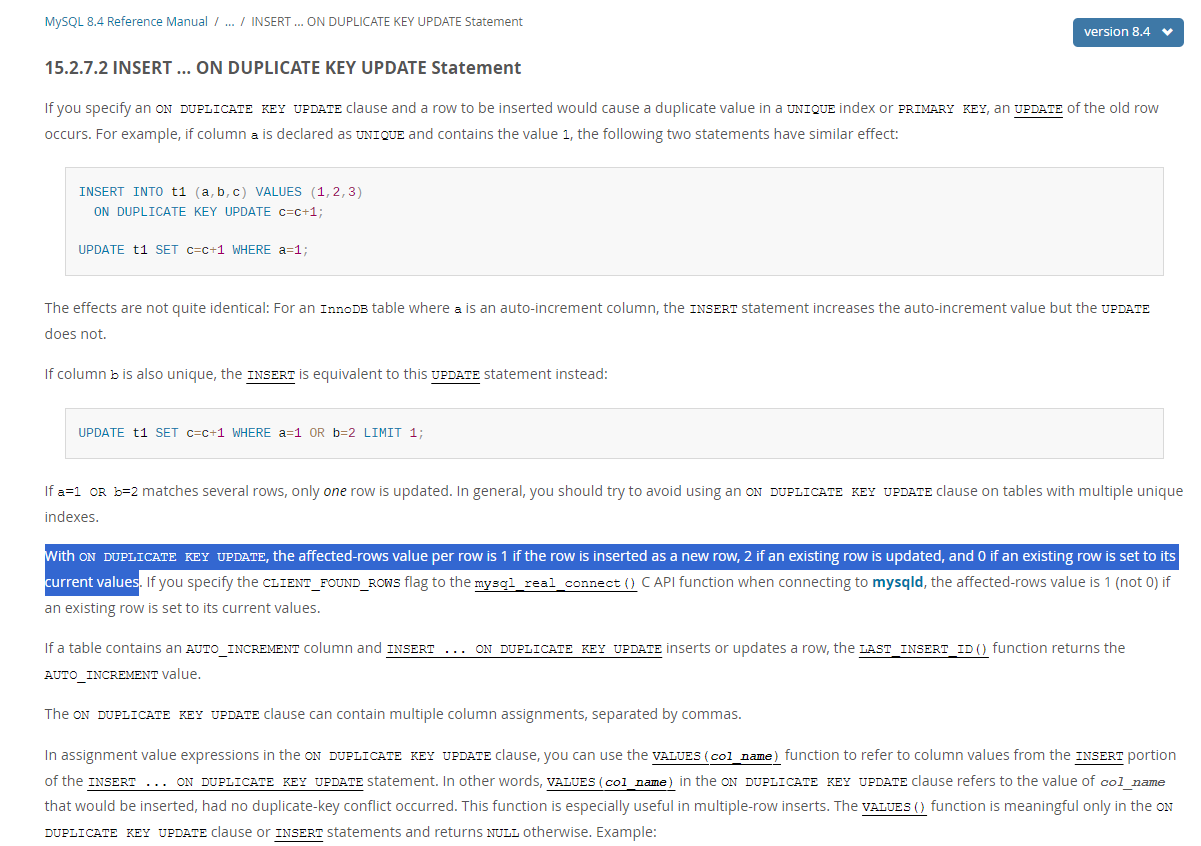欢迎来到《Bedtime Stories Time》。这是一个我们倾听、放松、并逐渐入睡的播客。感谢你收听并支持我们,希望你能将这个播客作为你睡前例行活动的一部分。今晚我们将讲述绿色科技的未来:可持续发展的梦幻故事的故事。一个宁静的夜晚,希望你现在已经感到平静、放松,并准备好迎接一个美好的夜晚。如果你还没有完全放松也没关系,只需听着今晚的故事,它会帮助你自然地放松下来,为你的心灵提供一个舒适的故事作为焦点,使你可以慢慢安静下来。

现在,请深吸一口气,然后呼出,感受你的身体逐渐沉入床中。如果你还没有闭上眼睛,现在就闭上吧。放松你的面部和下颌的肌肉。
在一个遥远的未来,人类的科技与自然实现了完美的结合。我们的故事从一个被称为“绿梦市”的地方开始。这座城市以其独特的绿色科技而闻名,城市中的一切都在智慧与可持续的理念下运行。
在绿梦市的中心,有一片广阔的森林,这片森林并非普通的自然景观,而是一座巨大的垂直森林公园。高楼大厦被设计成森林的一部分,每一层都是一个微型的生态系统。鸟儿在树间穿梭,蜜蜂在花丛中忙碌,人们则在树荫下散步,享受大自然带来的宁静。
这座城市的能源完全来自于可再生资源。太阳能板铺满了每一栋建筑的屋顶,风力发电机在高处旋转,城市的电力需求被源源不断的清洁能源所满足。每一辆车都是电动的,且大部分车辆由智能系统自动驾驶,减少了交通拥堵和污染。
绿梦市的居民们也在科技的帮助下过上了更加环保的生活。每个家庭都配备了智能家居系统,可以自动调节室内温度,管理能源使用,并将垃圾分类回收。食物则主要来自于城市中的垂直农场,这些农场利用先进的水培和气培技术,在最小的空间内生产出最大量的有机食品。
在这座城市中,还有一项特别的发明,那就是“绿光树”。这些树木并非普通的植物,而是由科学家们利用基因工程技术培育出来的特殊树种。绿光树的叶片在夜晚会发出柔和的绿色光芒,为城市提供自然的照明。白天,绿光树通过光合作用吸收二氧化碳,夜晚则释放出新鲜的氧气,净化空气。

故事的主角是一位名叫小绿的男孩,他生活在绿梦市中。小绿是个充满好奇心和想象力的孩子,他每天都在探索这座奇幻的城市。一天,小绿在城市的边缘发现了一座被遗忘的旧工厂。这座工厂曾经是城市工业化时代的象征,但现在已经废弃多年。
小绿决定探究这座旧工厂的秘密。他偷偷潜入工厂内部,发现了一台被遗弃的老式机器人。这个机器人已经停止运作,身上覆盖着一层厚厚的灰尘。小绿被机器人的样子吸引住了,他决定把机器人带回家,试图修复它。
经过一番努力,小绿终于让机器人重新启动了。机器人自我介绍道:“你好,我是绿宝,曾经是这座工厂的守护者。”小绿惊讶于机器人的智能,并决定和绿宝一起揭开工厂的历史。
在绿宝的帮助下,小绿逐渐了解了工厂的过去。原来,这座工厂在过去生产了大量的污染物,严重破坏了周围的环境。后来,城市决定关闭工厂,转而发展绿色科技,才有了今天的绿梦市。
小绿深受启发,决定利用绿宝的知识和自己的创造力,为城市的未来做出更多贡献。他们一起设计了一种新型的绿能设备,可以将城市中的废弃物转化为清洁能源。这个发明很快得到了市政府的支持,并在全城推广开来。
绿梦市因为小绿和绿宝的努力,变得更加环保和美丽。人们生活在这个科技与自然完美融合的城市中,享受着绿色科技带来的美好生活。每当夜幕降临,城市在绿光树的照耀下显得格外宁静与祥和,小绿和他的朋友们也伴随着绿色的光芒进入甜美的梦乡,继续他们关于未来的美好梦想。

Welcome to “Bedtime Stories Time.” This is a podcast where we listen, relax, and gradually fall asleep. Thank you for tuning in and supporting us. We hope you can make this podcast a part of your nightly routine. Tonight, we’ll be sharing a story titled “The Future of Green Technology: A Dreamy Tale of Sustainable Development.”
It’s a quiet night, and I hope you’re feeling calm, relaxed, and ready for a good night’s sleep. If you’re not fully relaxed yet, that’s okay. Just listen to tonight’s story, and it will naturally help you unwind. Let it provide a comfortable focus for your mind, helping you slowly settle down.
Now, please take a deep breath in, and then exhale, feeling your body gradually sink into the bed. If you haven’t closed your eyes yet, go ahead and do so now. Relax the muscles in your face and jaw.
In a distant future, human technology and nature have achieved a perfect blend, creating an era of harmony and sustainability that surpasses our wildest dreams. Our story begins in a place known as “Green Dream City,” a beacon of innovation and environmental stewardship. This city stands as a testament to the incredible advancements in green technologies, where every facet of life is designed with intelligence and sustainability at its core.
Green Dream City is not just a place; it’s a living organism, constantly evolving and adapting to the needs of its inhabitants and the environment. The city’s layout is meticulously planned to maximize green spaces, with parks, gardens, and natural reserves interwoven with urban infrastructure. The air is clean, filled with the scent of blooming flowers and the freshness of rain-washed leaves. Solar-powered drones hover above, monitoring air quality and dispersing seeds to ensure the flora remains vibrant and healthy.
The city’s buildings are architectural marvels, embodying the principles of biophilic design. Covered in lush greenery, these structures blend seamlessly with their surroundings, creating a sense of unity between human-made and natural environments. The facades of the skyscrapers are adorned with climbing plants, vertical gardens, and living walls that provide habitat for birds and insects. These green surfaces not only enhance the aesthetic appeal but also serve practical purposes such as improving air quality and providing insulation, thus reducing the need for artificial heating and cooling.
Energy consumption in Green Dream City is optimized through a network of smart grids that balance supply and demand in real-time. Every building is equipped with advanced energy management systems that use artificial intelligence to minimize waste and maximize efficiency. Residents can monitor their energy usage through intuitive apps, encouraging them to adopt more sustainable habits. The city also harnesses the power of nature, with river turbines generating electricity from flowing water and geothermal pumps tapping into the Earth’s natural heat.
Public transportation in Green Dream City is a marvel of modern engineering. The streets are filled with electric buses and trams, while bike-sharing programs encourage residents to cycle along dedicated green lanes that weave through parks and along riverbanks. Autonomous vehicles, powered by renewable energy, glide silently through the streets, offering seamless and sustainable travel options. The entire transportation network is integrated with a comprehensive data system that ensures optimal routes and minimizes congestion, further reducing the city’s carbon footprint.
At the heart of Green Dream City lies an expansive forest, but this is no ordinary natural landscape. It is a massive vertical forest park, an awe-inspiring blend of architecture and ecology. Skyscrapers are designed to be part of the forest, with each floor representing a miniature ecosystem. Birds flit among the trees, their songs creating a natural symphony that harmonizes with the gentle hum of urban life. Bees busily work in the flower beds, pollinating plants and contributing to the city’s biodiversity. People stroll in the shade, enjoying the tranquility that nature brings, their stress melting away as they immerse themselves in this green oasis.
The vertical forest park is a groundbreaking concept that redefines urban living. Each building is a self-contained ecosystem, supporting a diverse range of flora and fauna. The lower levels house dense forests with tall trees and undergrowth, providing habitat for larger animals such as deer and foxes. As you ascend, the vegetation becomes more specialized, with medicinal herbs, fruit-bearing plants, and flowers arranged in intricate patterns. The rooftops are crowned with lush gardens, offering panoramic views of the city and serving as communal spaces for residents to relax and socialize.
The integration of natural elements into the urban environment has a profound impact on the well-being of the city’s inhabitants. Studies have shown that exposure to nature reduces stress, boosts mood, and enhances cognitive function. In Green Dream City, every window offers a view of greenery, every street is lined with trees, and every building is a testament to the harmonious coexistence of technology and nature.
In the vertical forest park, sustainable agriculture flourishes. Advanced hydroponic systems allow for the cultivation of crops in vertical layers, using minimal water and no soil. These vertical farms produce fresh, organic food for the city’s residents, reducing the need for long-distance transportation and the associated carbon emissions. The waste produced by the city is composted and returned to the soil, creating a closed-loop system that nourishes the plants and maintains soil health.
The vertical forest park is also a hub of innovation and education. Research centers and laboratories are embedded within the forest, where scientists and students study the interactions between urban and natural environments. Visitors can participate in guided tours, workshops, and interactive exhibits that teach them about sustainable living practices. The park serves as a living laboratory, constantly evolving as new technologies and methods are developed to enhance the integration of nature into urban spaces.
In Green Dream City, the future of sustainable development is not just a dream but a reality. It is a place where human ingenuity and the wisdom of nature come together to create a world that is beautiful, resilient, and in harmony with the Earth. As we look forward to this future, we are inspired to take the necessary steps today to ensure that our dreams of a greener, more sustainable world can become a reality for generations to come.
The city’s energy is entirely derived from renewable sources. Solar panels cover every building’s roof, wind turbines spin high above, and the city’s electricity needs are met by a continuous supply of clean energy. Every vehicle is electric, and most are self-driving, reducing traffic congestion and pollution.
Residents of Green Dream City also lead more eco-friendly lives with the help of technology. Each home is equipped with a smart home system that automatically adjusts indoor temperatures, manages energy usage, and sorts waste for recycling. Most food comes from vertical farms within the city, using advanced hydroponic and aeroponic techniques to produce maximum yields in minimal space.
In this city, there’s also a special invention called the “Green Light Trees.” These are not ordinary trees but special species developed through genetic engineering. The leaves of Green Light Trees emit a soft green glow at night, providing natural illumination for the city. During the day, they absorb carbon dioxide through photosynthesis and release fresh oxygen at night, purifying the air.
The protagonist of the story is a boy named Little Green, who lives in Green Dream City. Little Green is a curious and imaginative child who explores the magical city every day. One day, he discovers an old, forgotten factory on the city’s outskirts. This factory was once a symbol of the city’s industrial age but has been abandoned for many years.
Little Green had always been a curious child, fascinated by the stories his grandparents told about the old days when technology and nature were at odds. One day, while exploring the outskirts of Green Dream City, he stumbled upon an old, abandoned factory. Its dilapidated walls were covered in ivy, and the rusted gates creaked eerily in the wind. The factory had long been forgotten, overshadowed by the city’s advancements in green technology. However, Little Green felt an inexplicable pull towards it.
Determined to uncover its secrets, Little Green decided to investigate the old factory. He sneaked inside through a broken window and was immediately enveloped in a cloud of dust. The air inside was stale, and the floor was littered with debris and remnants of a bygone era. As he cautiously navigated the dark, labyrinthine corridors, he stumbled upon a large, metal figure slumped against a wall. It was an old, disused robot, its once shiny surface now covered in layers of dust and grime. The robot’s lifeless eyes and dormant state piqued Little Green’s curiosity.
Despite the robot’s worn appearance, Little Green was intrigued. He had always been fascinated by machines and had a knack for tinkering with gadgets. Carefully, he examined the robot, noting its intricate design and advanced features. “I wonder if I can bring this robot back to life,” he thought. With a sense of determination, he decided to take the robot home and try to repair it.
Little Green spent days meticulously cleaning and repairing the robot. He scavenged parts from old appliances and studied ancient manuals to understand the robot’s complex circuitry. His tiny workshop was filled with the sounds of clinking metal and the glow of sparks as he soldered connections and replaced components. It was a laborious task, but Little Green was undeterred. He felt a deep connection to the robot and was determined to see it functioning again.
The Awakening of Greenbot
After much effort and many sleepless nights, Little Green finally managed to reactivate the robot. As he flipped the final switch, the robot’s eyes flickered to life, emitting a soft, green glow. Slowly, it began to move, its joints creaking as it stretched its limbs. “Hello,” the robot said in a surprisingly gentle voice, “I am Greenbot, the former guardian of this factory.”
Little Green was amazed by the robot’s intelligence and articulation. Greenbot’s voice carried a hint of nostalgia, as if it held memories of a time long past. Little Green eagerly listened as Greenbot recounted its history. “This factory was once a hub of innovation,” Greenbot explained. “We produced cutting-edge green technologies designed to harmonize human life with nature. My duty was to oversee the production and ensure everything operated efficiently and sustainably.”
The more Greenbot spoke, the more Little Green’s curiosity grew. He realized that the factory’s history was intertwined with the city’s evolution. Greenbot shared stories of the early days when the factory pioneered the development of solar panels, wind turbines, and biodegradable materials. It was a place where visionaries and engineers collaborated to create a sustainable future.
Fascinated by these revelations, Little Green decided to uncover the factory’s history with Greenbot’s help. They spent hours exploring the factory’s archives, discovering blueprints, prototypes, and journals detailing the innovations that once emerged from its halls. Greenbot guided Little Green through the factory’s legacy, revealing secrets and forgotten technologies that could still benefit the city.
Together, they unearthed long-lost inventions and revitalized old machinery. Greenbot’s vast knowledge and Little Green’s ingenuity formed a perfect partnership. They began restoring the factory, transforming it into a museum and research center dedicated to green technology. The factory, once abandoned and forgotten, became a beacon of hope and inspiration, reminding the citizens of Green Dream City of the importance of sustainable development and the endless possibilities when technology and nature work in harmony.
With Greenbot’s help, Little Green delved deep into the factory’s past, uncovering its long and complex history. Greenbot recounted how the factory was once a bustling hub of industrial activity, producing a wide array of goods that powered the city’s growth. However, this progress came at a steep cost. The factory’s operations generated massive amounts of pollution, spewing toxic chemicals into the air and contaminating the nearby rivers and soil. The once-lush forests surrounding the factory turned barren, and the local wildlife suffered greatly.
Greenbot shared vivid memories of the factory’s heyday, when smokestacks belched thick, black smoke into the sky, and the sound of machinery was a constant din. “We were driven by production quotas and efficiency,” Greenbot explained, “but we neglected the impact on our environment. The air was thick with smog, and the rivers ran dark with waste. The factory’s success was built on the suffering of the land and its inhabitants.”
The city residents began to notice the devastating effects on their health and quality of life. Respiratory issues became rampant, and the once-clear skies were perpetually gray. Community protests grew louder, demanding action against the environmental degradation. The turning point came when a particularly severe pollution incident caused widespread illness, forcing the city government to take drastic measures.
Under mounting pressure, the city decided to shut down the factory. This decision marked the beginning of a transformative journey. The city’s leaders committed to a radical shift towards green technologies, aiming to repair the damage and create a sustainable future. The factory, once a symbol of progress, was left abandoned as the city embarked on its ambitious project to reinvent itself. Thus, Green Dream City was born—a testament to the resilience and determination of its people to create a harmonious coexistence between technology and nature.
Inspired by the factory’s history and driven by a desire to contribute to the city’s bright future, Little Green felt a surge of motivation. He realized that with Greenbot’s extensive knowledge and his own creativity, they could develop innovations that would further enhance Green Dream City’s sustainability. After weeks of brainstorming and experimentation, they conceptualized a revolutionary green energy device.
Their new invention aimed to tackle one of the city’s remaining challenges: waste management. Little Green and Greenbot designed a device that could convert city waste into clean, renewable energy. This waste-to-energy converter utilized advanced bioconversion processes and cutting-edge nanotechnology to break down organic and inorganic waste, producing electricity and biofuels with minimal environmental impact.
The device was designed to be compact and efficient, capable of being installed in various locations throughout the city. It featured modular components that could be easily scaled up or down depending on the area’s waste output. Additionally, the device included a real-time monitoring system, ensuring optimal performance and immediate troubleshooting when needed. Their invention not only promised to reduce landfill waste but also to provide a steady supply of green energy, reducing the city’s dependence on fossil fuels.
Excited about their innovation, Little Green and Greenbot presented their prototype to the city government. The officials were highly impressed by the potential benefits of the device and its alignment with the city’s sustainability goals. Recognizing the value of this invention, the government decided to support its development and implementation.
With governmental backing, Little Green and Greenbot’s device was soon promoted throughout Green Dream City. Pilot installations began in key locations, such as residential neighborhoods, commercial districts, and industrial zones. The results were immediate and profound. Waste volumes decreased significantly, and the city’s energy grid received a boost from the newly generated clean energy. The success of the device not only showcased the ingenuity of its creators but also reinforced the city’s commitment to innovation and sustainability.
Little Green and Greenbot’s collaboration sparked a wave of new ideas and projects aimed at further enhancing Green Dream City’s green technologies. Their story became an inspiration for others, demonstrating that with creativity, determination, and a respect for nature, even the most daunting challenges could be overcome. Green Dream City continued to thrive as a beacon of sustainable development, its future bright and its skies clear, thanks to the tireless efforts of its visionary inhabitants.
Thanks to the efforts of Little Green and Greenbot, Green Dream City becomes even more environmentally friendly and beautiful. People live in this city where technology and nature are perfectly integrated, enjoying the wonderful life that green technology brings. Every night, as the city is illuminated by the soft glow of Green Light Trees, Little Green and his friends fall asleep to the gentle green light, dreaming beautiful dreams of the future.




















